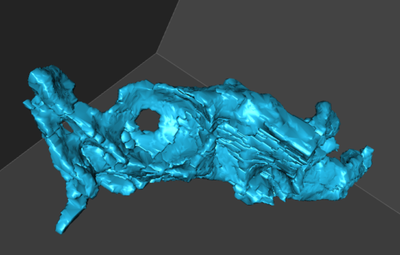Difference between revisions of "Glial Cell"
| Line 7: | Line 7: | ||
==EyeWire== | ==EyeWire== | ||
| − | [[Image: | + | [[Image:Glial.png|thumb|right|400px|A glial cell in the EyeWire interface.]] |
In EyeWire, glial cells have a characteristic large, swoopy, irregular structure distinct from neural cells. | In EyeWire, glial cells have a characteristic large, swoopy, irregular structure distinct from neural cells. | ||
Revision as of 15:15, 16 June 2014
A glial cell is a cell that supports and protects neurons. They serve to surround neurons and hold them in place, to supply nutrients and oxygen to neurons, to insulate one neuron from another, and to destroy pathogens and remove dead neurons.
Contents
Müller cell
One kind of retinal glial cell, the Müller cell, is of importance in transporting light from the surface of the retina to the photoreceptors. Vertebrate retinas have their photoreceptors at the back of the retina, with masses of neurons, blood vessels, and other cells between the photoreceptors and incoming photons. Müller cells act as fiberoptic light guides, allowing photons to pass through the retinal tissue relatively unimpeded.[1]
History
EyeWire
In EyeWire, glial cells have a characteristic large, swoopy, irregular structure distinct from neural cells.
References
- ↑ Franze et al. (2007), Müller cells are living optical fibers in the vertebrate retina. Proc Natl Acad Sci U S A. 104(20):8287-8292.
